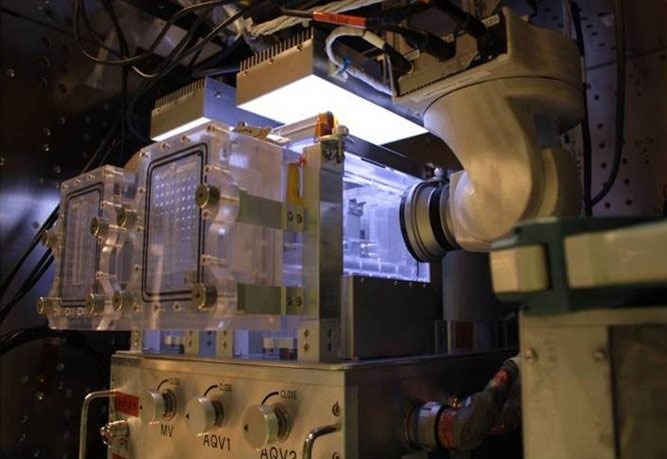Aquarium on space station
The unmanned spacecraft Kounoton3 of the Japanese Space Agency (JAXA) has successfully connected to the International Space Station (ISS) in late July not only to supply conventional supplies.
An aquarium called Aquatic Habit (AQH) was provided to ISS to study the space environment for marine life.

AQH is a high-tech aquarium designed to operate in zero gravity environments. Managers will intervene at least for this aquarium and mainly collect information from them. In the long term this aquarium is also a place to try habitat for amphibians, not just fish. This is the first time that the AQH aquarium has a closed circulatory system assembled into the ISS Space Station.
AQH structure consists of two compartments with dimensions of 15 x 7 x 7cm, total water capacity of 700 cubic centimeters (cc). AQH has an advanced support regime that includes habitat monitoring to eliminate waste automatically, maintain pressure, measure oxygen and temperature standards. Specialist Nobuyoshi Fujimoto of the Japanese Space Agency said that with a special bacterial filter and how to remove ammonia from the water can help fish live up to 90 days, can lay eggs up to 3 generations in orbit. This is the first time humans have taken fingerlings from space.
With closed aquarium conditions, astronauts do not need to feed ants with ants on a regular basis, the automated system will know when to supply food. Participating in this experiment is a freshwater fish Medaka (Oryzias latipes) living in Asia, which has been genetically mapped and has a very fast reproductive life cycle. The 90-day study round will focus on the study of radiation affecting fish liver, osteoarthritis, muscle atrophy and other biological indicators.
Reference: Gizmag
- China plans to launch Tiangong Space Station similar to ISS by 2020
- Overview of China's Thien Cung 1 Space Station
- How did the Soviet Union save the Saliut-7 space station?
- NASA celebrates 40 years of the first space station project
- Russian space station will replace the US ISS global surveillance
- China intends to operate the new space station in 2022
- By 2022, China will have the first international space station
- The stray 8.5-ton space station will create
- The reason why China's 8.5-ton space station doesn't burn out when it falls
- The most beautiful aquarium fish
- China will open the space station for foreign countries
- The first commercial space station is expected to launch in 2020
 Van Allen's belt and evidence that the Apollo 11 mission to the Moon was myth
Van Allen's belt and evidence that the Apollo 11 mission to the Moon was myth The levels of civilization in the universe (Kardashev scale)
The levels of civilization in the universe (Kardashev scale) Today Mars, the sun and the Earth are aligned
Today Mars, the sun and the Earth are aligned The Amazon owner announced a secret plan to build a space base for thousands of people
The Amazon owner announced a secret plan to build a space base for thousands of people